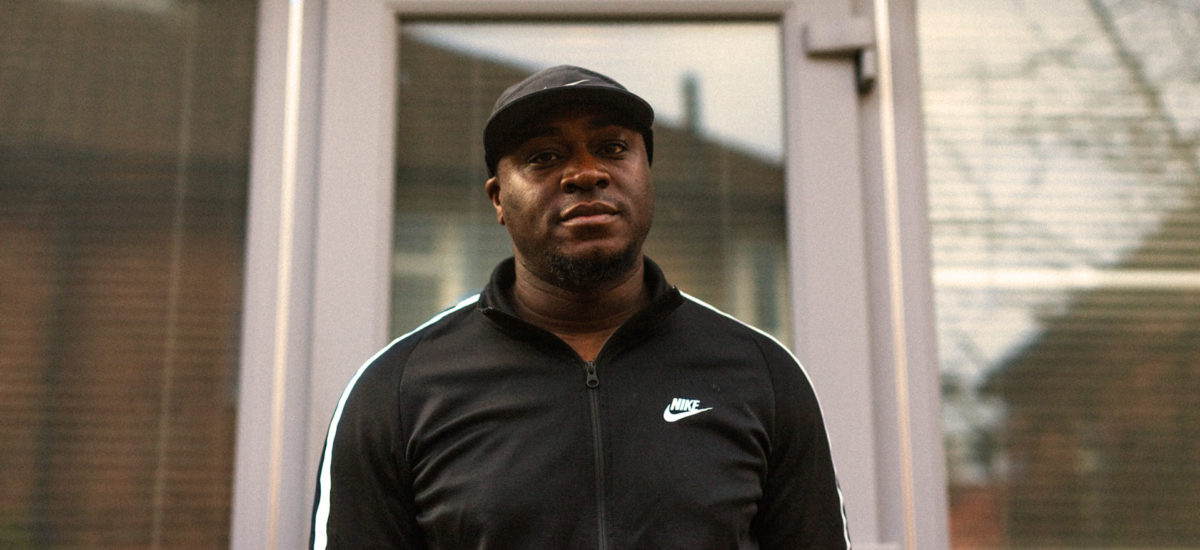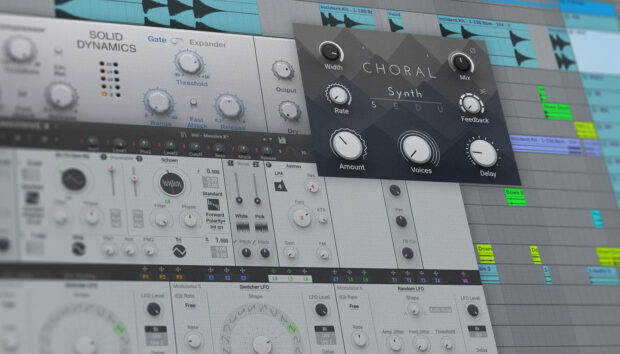
One the pioneers within the UK funky scene, DJ and producer Roska has been at the forefront of alternative, cutting club hits. Talking to NI from his London studio, the Roska shares his production origins, talks about his favourite plugins, and explains how KONTAKT plays an integral part in his music.
How did you initially get into producing?
It basically started with my uncle, who had this soundsystem called Ecstasy Soundsystem years and years ago. He grew up in the New Cross area of London, and this was one of the first soundsystems I was exposed to as a kid. My dad, who was also part of Channel One [Soundsystem] at one point too, ended up being a part of Ecstasy with some of my other uncles, and they all did their own thing really. My uncle had his own studio down in Nunhead, and I would go down there every Saturday and just sit in one of the corners and watch what they were doing. In terms of programs, I remembered they were using Cubase at this point and funnily enough, one of the singers they were using at the time ended up using on my first album. It was a very social affair: people were there on the weekends, they bought food, chatted about life and made music as a group.
So from here you got into hip hop, drum and bass and grime right?
That’s right! It got to around 2005/2006, at a point where I had recently lost loads of my early productions in that sort of stuff, music that I had really wanted to release. From here, I just started completely afresh, and started making more broken-beat rhythms and house music. From that, I eventually put two tunes together called ‘Feeline’ and ‘Boxed In’ and released them myself around the end of February in 2008.
You mentioned in a previous interview about how you always enter a studio with a skeleton idea so that the session runs a little easier. How do you go about getting that skeleton idea into motion when using some of your equipment?
I’ll start by making a lot of drum patterns and ideas, be it an eight bar or a four bar loop and leave it as that, and then come back to them a little later. I’ll make most of my ideas inside my house, then come back to them properly in my studio. It’s a good way to work whenever I get a writer’s block. I’ll come back to these little skeleton ideas, give them an edit here and there, and make something from that, rather than just be sitting there from a completely blank project thinking what can I do or where do I start. I was recently in the studio with Toddla T, and did the same thing, so we were both building on these little skeleton ideas and loops we both had.

Does the initial skeleton idea ever end up sounding like the final version or is there a lot of progress?
It completely depends! For example, I once created a drum pattern from scratch and left it sitting on my computer for some reason. Three years later, I came back to it and the simple pattern still had potential. I ended up editing and expanding it, and eventually got a different track out of it.
Can you tell us about any particular go-to kits and libraries you’ve been using?
I’ve been trying to play around with as much as possible. I’ve been using a lot of the orchestral samples organs. I use Kontakt all the time. I think all my projects at the moment have at least one bit of Kontakt in there. I started on Komplete 8 around 2012 I think, and since then I’ve just adapted my workflow around using it. Going through some random projects now, I can easily pick out moments where I’ve used the sampler, the brass one being a large part of ‘Str8 Rum’ on the new EP. Before Kontakt and Logic, I was using Fruity Loops and just a bunch of music samples I’d slowly gathered over time. Once I got Kontakt though, it just seemed to have everything I needed in one place, packaged in a way I can easily manipulate the sounds to how I want to sound. If you go in easy enough, it’s never going to end up coming out as a stock sound if you know what I mean.
Why use KONTAKT?
Kontakt has enhanced what I already had to say. With a lot of my early productions I was using a lot of chopped samples that I couldn’t manipulate as much as I could. With Kontakt , I’ve been able to do a lot more than I previously could and can have certain instruments, such as the brass one I mentioned before, sounding a lot more genuine. It then gives me the opportunity to also strip back the sounds if I want to, so it doesn’t sound as genuine or ‘real’, if I’m going for a different direction.
What is your favourite thing about KONTAKT?
One of the good bits about Kontakt is you can add more bits in yourself. So with the pattern for ‘Gimmie That’ I used this plugin called ‘Laventille Rhythm Section’, made by a group called Just Now who basically created this plugin to run through Kontakt. You can find loads of great external ones like this. I’ve got this bass I’ve been using through the sampler a fair bit and then using some of the UAD plugins such as the Fatso JR to bring the bass out a bit. There’s a lot to beef out your tracks with.
How does working with a vocalist like Serocee work? Is there much back and forth in this instance or does he run through certain productions and decides what he wants to vocal?
Out of the four tracks we made, he came down here at the studio and worked on three of them. I’d make the tracks initially and sent them to Serocee, then we’d set a date, he’d come down, he’d vocal it, then I’d mix it, edit the track a bit more, go back in on the track, send it back then go back and forth if any changes need to be made or any rerecording needs happening. We’d do that for each track basically. I always have a rough track, then I let Sero jump on it, followed by me enhancing to a suitable level. If I think the vocals are bigger than the track, then I’ll bring things up to make everything sound as good as possible. It was pretty easy to be fair, and a fun process in general working with him and going through the whole project. He knows what he wants to get out of a recording. We spent in total around four months on it, working on each track and getting them to a point we were both happy to. We ran through them quickly like that, one after the other.
With your label Kicks and Snares do you feel you’ve set out do what you wanted since starting the label? A lot of your music including the new EP seems to come out through that.
The label is ten years old now. Originally I started the label as I couldn’t sign my tunes to any labels; no one was interested in what I had to offer so I just set out on that basis. When I signed my first record deal a few years after, the label became a hub and a platform for new artists that didn’t know how to release music. I decided to keep that on, and over the last three years stepped it up a little. I pushed more releases out, enjoyed it more and put a more money into the label. I feel it’s been a helping hand for me and a stepping stone for other artists. James (Murder He Wrote) is a prime example. I’ve just been trying to be a good mentor by saying do this or do that differently or keep doing that, and it’s been good to see it actually work for someone. I’ve done it for a few of the other guys too, everybody’s level is different. With James he’s been around for quite a while but adding that extra layer along the way for people is what I wanted to do with the label.
Soundcloud: https://soundcloud.com/roskaroskaroska
Website: http://www.roskaroskaroska.com/
Facebook: https://www.facebook.com/Roskaroskaroska/
photo credits: Vivek Vadoliya















